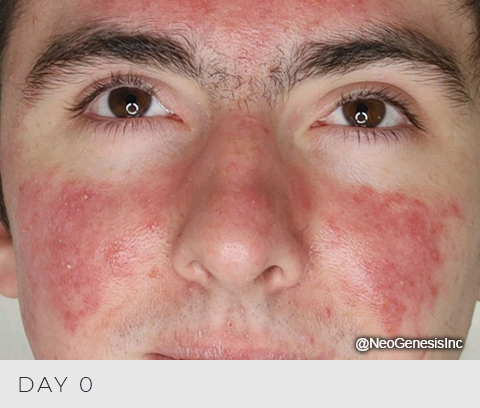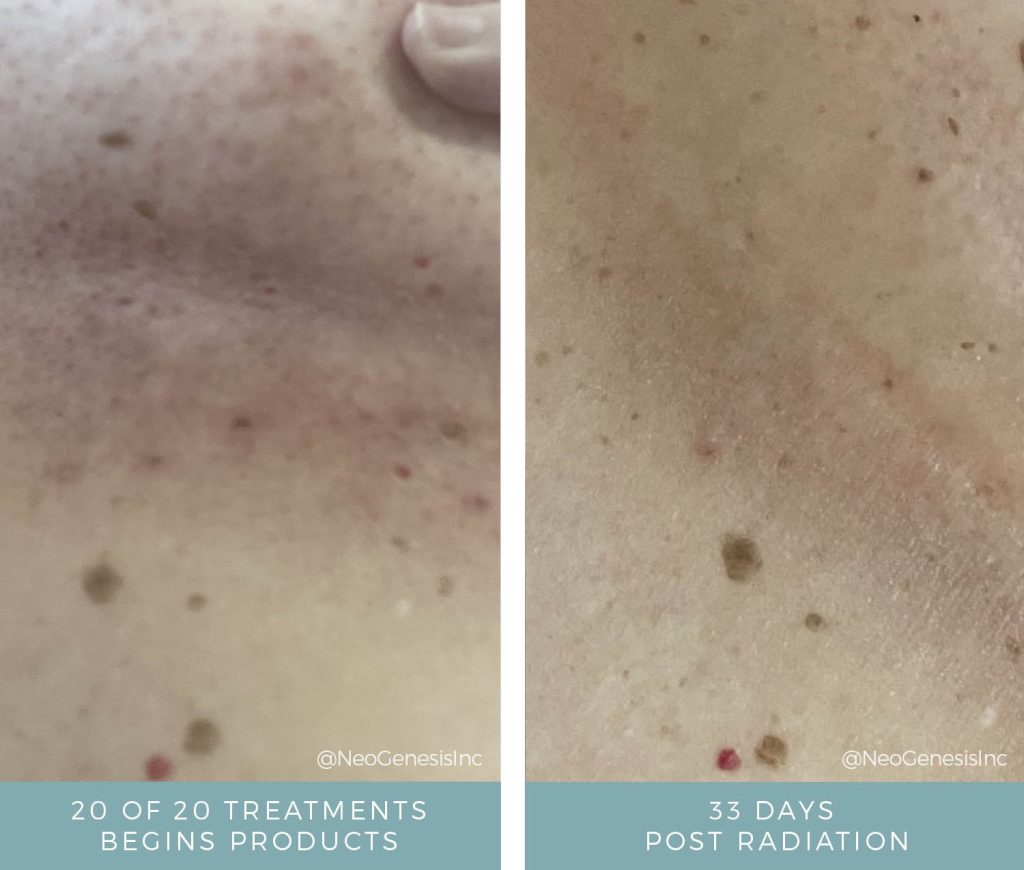Acne + Contact Dermatitis


Treatment + Photos Courtesy of Professional Partner
Becky Stratton, The Skin Studio

“This client has had issues with cystic acne for quite some time. He also works at a wood pulp mill and is often around the chemicals in the air. Once he started on a regular skin care regimen using NeoGenesis products, his skin started to improve almost immediately. The redness started to subside, the flaky skin started to improve and the itchiness is now gone.” – Becky Stratton, The Skin Studio
PRODUCTS USED:
Cleanser, Recovery, Skin Serum, Barrier Renewal Cream, Enzyme Crème Mask, Mandelic Acid 8%
PROTOCOL:
Cleanser, Recovery, Skin Serum, Barrier Renewal Cream – 2x Daily
Enzyme Crème Mask – 3x Weekly
Mandelic Acid 8% every other day in PM after Recovery
FEATURED VIDEOS
CYSTIC ACNE + CONTACT DERMATITIS
Cystic acne and contact dermatitis are two skin conditions that can affect individuals of all ages. While they may have similar symptoms, such as redness and inflammation, the underlying causes and treatment methods for these conditions differ.
Cystic acne is a severe form of acne that occurs when pores become clogged with oil, dead skin cells, and bacteria. This results in large, painful bumps on the skin, often on the face, neck, chest, and back. Cystic acne is more common in teenagers and young adults due to hormonal changes during puberty, but it can also affect individuals later in life.
On the other hand, contact dermatitis is a type of skin inflammation that occurs when the skin comes into contact with an irritant or allergen. This can be caused by a wide range of substances, including chemicals in the workplace, cosmetics, fragrances, and plants like poison ivy. Contact dermatitis can manifest as redness, itching, and blisters on the skin in the affected area.
Read our blog: How to Find Products That Won’t Clog Your Pores – Skin Care 101 to learn about non-comedogenic products for acne-prone skin.
Treatment + Photos Courtesy of Professional Partner
Becky Stratton, The Skin Studio

“This client has had issues with cystic acne for quite some time. He also works at a wood pulp mill and is often around the chemicals in the air. Once he started on a regular skin care regimen using NeoGenesis products, his skin started to improve almost immediately. The redness started to subside, the flaky skin started to improve and the itchiness is now gone.” – Becky Stratton, The Skin Studio
PRODUCTS USED:
Cleanser, Recovery, Skin Serum, Barrier Renewal Cream, Enzyme Crème Mask, Mandelic Acid 8%
PROTOCOL:
Cleanser, Recovery, Skin Serum, Barrier Renewal Cream – 2x Daily
Enzyme Crème Mask – 3x Weekly
Mandelic Acid 8% every other day in PM after Recovery
FEATURED VIDEOS
CYSTIC ACNE + CONTACT DERMATITIS
Cystic acne and contact dermatitis are two skin conditions that can affect individuals of all ages. While they may have similar symptoms, such as redness and inflammation, the underlying causes and treatment methods for these conditions differ.
Cystic acne is a severe form of acne that occurs when pores become clogged with oil, dead skin cells, and bacteria. This results in large, painful bumps on the skin, often on the face, neck, chest, and back. Cystic acne is more common in teenagers and young adults due to hormonal changes during puberty, but it can also affect individuals later in life.
On the other hand, contact dermatitis is a type of skin inflammation that occurs when the skin comes into contact with an irritant or allergen. This can be caused by a wide range of substances, including chemicals in the workplace, cosmetics, fragrances, and plants like poison ivy. Contact dermatitis can manifest as redness, itching, and blisters on the skin in the affected area.
Read our blog: How to Find Products That Won’t Clog Your Pores – Skin Care 101 to learn about non-comedogenic products for acne-prone skin.









